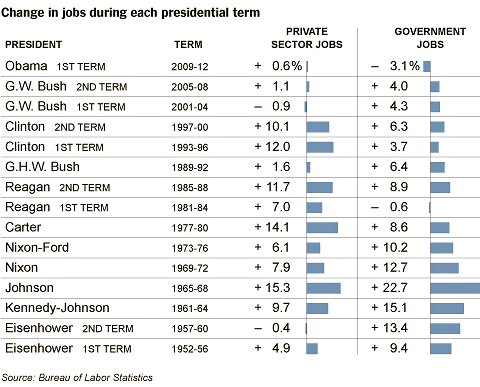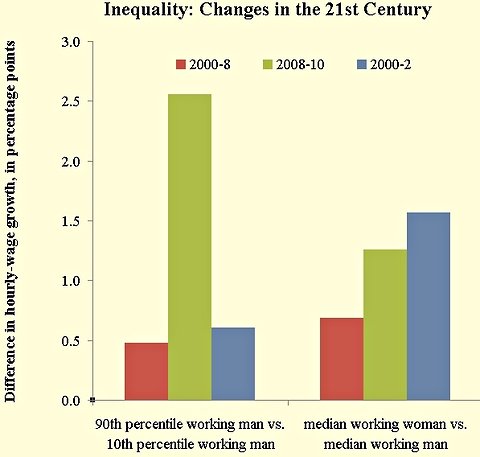The shift, which was confirmed by several administration officials and will be announced on Friday, does not portend change in the president’s economic agenda. But with Mr. Sperling’s exit on Jan. 1 after nearly three years in the White House and two at the Treasury Department, Mr. Obama will lose an adviser who has been known as a perpetual motion machine for progressive domestic policy ideas since the Clinton administration.
As director of the White House National Economic Council — an office that President Bill Clinton created and President George W. Bush retained — Mr. Sperling provided briefings to the president and oversaw the development of economic policies on domestic programs, taxes, and trade with other departments and agencies. He is best known for his work on Mr. Obama’s job-creation initiatives and tax cuts for lower- and middle-income Americans and for small businesses. His nickname in the West Wing was Small Business.
“It’s in no small part due to Gene’s efforts that tax credits for low-income working families now lift more children out of poverty than any other program or policy,” said Robert Greenstein, president of the liberal Center on Budget and Policy Priorities.
If Hillary Rodham Clinton runs for president in 2016, Mr. Sperling, 54, is expected to join her team, a quarter-century after he played a prominent role in her husband’s first presidential campaign.
“There’s probably no one in the country who’s better than Gene Sperling at developing policy and presenting it in a way that is easily understood. He sits at the nexus of policy, politics and communications probably as well as anyone,” said Dan Pfeiffer, Mr. Obama’s senior strategist. “When Gene gets a project, there is no force that can stop him from executing it. He will work all night, call anyone, convene a thousand meetings in order to get it done.”
Mr. Zients, 46, had no government experience when he joined the administration in June 2009 as the deputy director for management at the Office of Management and Budget. He had made his fortune as an executive at corporate management and media companies and at his own private equity firm, Portfolio Logic, and was chosen by the president for his expertise in business and management efficiencies.
He was easily confirmed by the Senate and designated by the president as the government’s “chief performance officer,” a job that Mr. Obama proposed in his presidential campaign. Mr. Zients identified ways to cut federal costs through eliminating, reorganizing or consolidating agencies and introducing more efficient ways of operating.
Mr. Zients quickly impressed Mr. Obama and was long rumored for promotion. But he alienated Senator Max Baucus, the Montana Democrat who is chairman of the Senate Finance Committee and was opposed to Mr. Zients’s recommendations that would have removed government functions from the committee’s jurisdiction. That breach has complicated Mr. Zients’s advancement.
He has twice been acting director of the budget office when the top job was open. The first time, in 2010, Mr. Zients was deemed by the White House to have too little budget experience to succeed Peter R. Orszag, and the job went to Jacob J. Lew.
Mr. Zients again became acting director when Mr. Lew, who is now Treasury secretary, left in early 2012 to become White House chief of staff. Mr. Zients was acting director for all of 2012 because the White House did not want to risk a confirmation fight in an election year.
After his re-election, the president was under fire for having too few female advisers, For budget director, he turned to Sylvia Mathews Burwell, who was known among senior Obama officials for her work at the National Economic Council, the Treasury Department and the budget office in the Clinton administration.
When Mr. Obama announced her nomination in March at the White House, with Mr. Zients looking on, the president hinted that Mr. Zients might soon rejoin in the administration. “There’s no question that Jeff’s skill and versatility have served the American people very well,” Mr. Obama said, adding, “I expect it will continue to serve us well in the future.”
The president considered Mr. Zients for United States trade representative, but he would have to be vetted by Mr. Baucus’s committee. The job went to Michael B. Froman, one of Mr. Obama’s close advisers at the White House.
Mr. Zients was also considered for commerce secretary, though Mr. Obama’s favorite candidate was a longtime financial supporter from Chicago, the businesswoman Penny Pritzker, who now holds the post. The new opening for Mr. Zients became available when Mr. Sperling told Mr. Obama months ago that he would be leaving after 2013. The director of the National Economic Council does not have to be confirmed by the Senate.
Mr. Sperling said that he was leaving for personal reasons. He has been commuting in recent months to Los Angeles, where his wife, Allison Abner, a scriptwriter and producer, moved with their son and daughter to help develop a new Fox television show. The two met in 2001 when Ms. Abner was a writer on “The West Wing” and Mr. Sperling, after eight years in the Clinton White House, was a consultant.
He said he will not look for a private sector job until he leaves the White House, but did not rule out working in Washington if he had more flexibility to be with his family. Mr. Sperling will be among those advising the president this fall in the fights with Congressional Republicans over spending and the debt limit. And with Republicans blocking much of Mr. Obama’s legislative agenda, Mr. Sperling will continue looking for ways that the president can use existing programs and executive actions to spur the economy, especially manufacturing. A current focus for Mr. Sperling, a native of Ann Arbor, Mich., is to steer federal assistance to a bankrupt Detroit.

Article source: http://www.nytimes.com/2013/09/13/us/politics/ex-white-house-aide-to-be-economic-adviser.html?partner=rss&emc=rss






